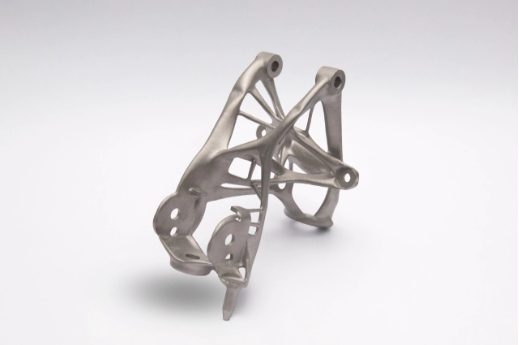General Motors in Detroit is using a new generative design software technology from California’s Autodesk to further vehicle lightweighting. The technology will help develop efficient and lighter alternative propulsion, and zero-emission vehicles.
The software uses cloud computing and artificial intelligence-based algorithms to explore multiple permutations of a part design, generating hundreds of high-performance, geometric design options based on goals and parameters set by the user, such as weight, strength, material choice, fabrication method, and more. The user then determines the best design option.
“This disruptive technology provides tremendous advancements in how we can design and develop components for our future vehicles to make them lighter and more efficient,” says Ken Kelzer, GM vice president of global vehicle components and subsystems. “When we pair the design technology with manufacturing advancements such as 3-D printing, our approach to vehicle development is completely transformed and is fundamentally different to co-create with the computer in ways we simply couldn’t have imagined before.”


The new technology decreases vehicle mass and increases parts consolidation opportunities that cannot be achieved through traditional design optimization methods.
The agreement is multi-year and will focus on projects involving generative design, additive manufacturing, and materials science. Executives and engineers from both companies will work on the projects.
“Generative design is the future of manufacturing, and GM is a pioneer in using it to lightweight their future vehicles,” says Scott Reese, senior vice president for manufacturing and construction products at Autodesk. “Generative technologies fundamentally change how engineering work is done because the manufacturing process is built into design options from the start. GM engineers will be able to explore hundreds of ready-to-be-manufactured, high-performance design options faster than they were able to validate a single design the old way.”

GM has worked with 3-D printing for more than 30 years and has launched 14 new vehicle models with a total mass reduction of more than 5,000 pounds, or more than 350 pounds per vehicle, since 2016. Of these models, more than half of the vehicles shed 300 pounds or more, including the 2019 Chevrolet Silverado, which reduced mass by up to 450 pounds.
Most of the weight reduction resulted from material and technology advancements. Decreasing mass and consolidating parts can allow for more interior space and vehicle content, increased range, and enhanced vehicle performance.






